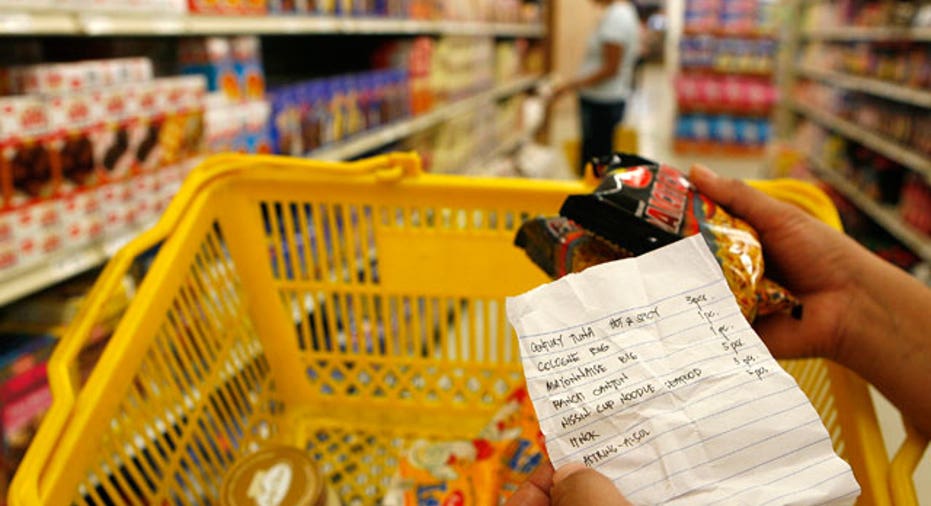Beyond Couponing: How Big Families Can Cut Their Food Budgets

Dear New Frugal You,
Our family is really struggling. To feed a family of five I'm spending about $900 per month. I already use coupons and plan my meals around what's on sale. Are there some secrets to grocery shopping that I'm missing? Sure would like to know.
- Susie
Dear Susie,
You've pointed out one of the biggest budget busters today -- feeding your family. And more and more families are feeling the pinch of rising food prices. So let's try to answer your question in two parts. First, let's compare your spending to others. Then we'll look at some ways that you can reduce your grocery bill.
Comparing your grocery bill to others' is always hard. There are so many variables involved. A single word provides a perfect example: teenagers. If you have a teen in your home, expect your food bill to be higher. And, short of sending them off to boarding school, there's only so much that you can do.
Even though the comparison is difficult, there are ways to tell if your spending is way out of line. We'll go to the 2012 U.S. Statistical Abstract for some data. In 2009 (the most recent data available), the average family spent $3,753 for food that they ate at home and additional $2,619 for food prepared away from home. That doesn't take into account family size. The Abstract does provide numbers for families of five or more. Unfortunately, those figures will include families bigger than yours, but it's the best available.
Larger families spend $10,034 for food prepared at home, plus an additional $3,710 for food away from home.
The food prepared at home works out to $836 per month. So it would appear that you're a bit on the high side. But I wouldn't sweat trying to get to a specific dollar goal each month. It's more important for you to develop habits that will reduce your bill as much as possible.
That's not easy right now. According to the Bureau of Labor Statistics, the cost of food prepared at home has gone up 6.3% in the 12 months ending in September 2011. Ask most shoppers and they'd say that number is low.
There's no end in sight. Just weeks ago, ConAgra released a statement that it expects food prices to increase 10% in the next year. Because they're one of the largest food companies in the country, its forecast is probably good.
So what can you do to keep her grocery bill down? Begin by looking at the nonfood items that you tend to buy at the grocery store. Paper and cleaning products come to mind. Substitute where possible: Try cloth napkins and kitchen towels for paper towels, and homemade cleansers for expensive name-brand products. Where no substitute is available, as with toilet paper, find the store that offers the lowest prices.
Next, take a look at your grocery list paying specific attention to convenience items. Although you won't find it in the dictionary, I'm convinced that to the food companies "convenience" is a word meaning "permission to dig deeply into your wallet."
They rely on the fact that we have busy lives and want to avoid spending time in meal preparation. Don't be fooled. That convenience costs quite a bit. Don't believe me? Compare the cost of raw carrots to the smaller, cleaned carrot pieces, or the price per pound of sliced roast beef at the deli counter to a full roast in the meat section. Yes, your time is valuable. But is it worth more than $30 per hour?
You're already using coupons. That's good! Depending on where you live they may even be able to double them. But you shouldn't buy an item just because you have a coupon. Often the generic is cheaper without a coupon than the advertised brand with one.
Be cautious about buying at the big-box warehouse stores. You need to compare prices. A bigger package size may not mean a lower per-unit cost. And you don't want to buy something that will go bad before you use it. Food that you have to throw out is expensive no matter how little you paid for it.
Finally, I encourage you and all grocery shoppers to use a price book. It may be the best savings tool that you've never heard of.
For most of us, there are about 15 to 20 items that really run up our grocery bill. A price book is an easy way to keep track of prices for those items. You can use a loose-leaf or spiral notebook. Use one page for each of those items. Create columns for date, store, description, price, size and cost per unit.
Take the book with you to the grocery store. If one of your tracked items seems cheap, look at the page for that item. If the price is indeed low, mark it in the book and stock up on the item. If the current price is high, don't put anything in the book and only buy what you absolutely must.
It's that simple. Many people report saving 15% or more by using a price book. And you don't need to change your eating habits a bit.
There are many other tools to help reduce grocery bills. Among them are reducing wasted leftovers, bringing lunch and snacks to work and menu planning based on sale items.
Susie, if you're serious about reducing the food bill begin to use a new tool. When you're comfortable with it, add another tool until you've tried them all. You'll be surprised at how much you can save if you take control over the buying process.
See related: Creating a grocery price book



















